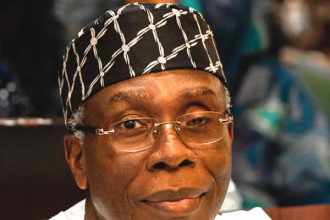Hundreds of workers at the Centers for Disease Control and Prevention who were fired in October returned to work this week, thanks to a provision in the shutdown-ending deal passed by Congress.
For many, however, the trip back to the office is far from joyful.
Over the past nine months, under the supervision of Health Secretary Robert F. Kennedy Jr., CDC employees have experienced more turmoil than most under the Trump administration.
They’ve faced several rounds of firings and sporadic reinstatements, witnessed the dramatic ousting of their director and the resignation of top career leaders in protest. Some were shot at by a gunman targeting the agency’s Atlanta headquarters in August and all have watched as Kennedy fired and then replaced a key panel of CDC vaccine advisers.
In addition to all that, like most federal workers, many CDC employees went without paychecks during the longest-ever closure of the federal government.
On Wednesday, as some employees returned to buildings riddled with bullet holes, morale took another hit with a surprise update to the CDC’s vaccines and autism webpage. It suggests that vaccines may cause autism and states that “studies supporting a link have been ignored by health authorities.” The move upended decades of work by senior career vaccine scientists to combat misinformation about a potential link between vaccines and autism – which many large studies have found no evidence of.
In a statement, HHS spokesperson Andrew Nixon described the change as a “common-sense update” to fulfill a “commitment to transparency and Gold Standard Science.”
He also said that Kennedy is trying to restore a “broken” CDC: “His focus is on returning the CDC to its core mission and ending the culture of insularity that has undermined public confidence.”
Some employees have a different take.
“On top of the never-ending feeling that we have metaphorical targets on our backs, a lot of employees feel like they have literal targets on their backs,” one CDC employee said. “The mood among CDC staff is ‘dead man walking.’”
The congressionally-mandated reinstatement of fired CDC workers marks at least the fourth time the administration has had to backtrack on planned firings of large chunks of the agency’s workforce.
POLITICO interviewed current and recently departed CDC employees about the changed work environment. Most of them were granted anonymity for fear of retribution.
Taken together, the eight workers described a culture of declining faith in the agency and a lack of guidance and communication from leadership. In his nearly three months on the job, CDC Acting Director Jim O’Neill has sent only one agency-wide email, two employees said, about how the agency should improve.
“Usually we have regular ‘all hands’ calls with the director. And the director takes time to meet the agency,” said a second CDC employee. “We’ve never heard the man even speak.”
Nixon said that O’Neill is having “almost daily meetings with CDC leadership” and has led the response to a recent infant formula recall.
In early October — just 10 days into the shutdown — the Trump administration laid off around 1,760 HHS employees, primarily hitting the CDC. It later reversed about half of those firings, citing “data discrepancies and processing errors.”
Democrats negotiated a provision in the continuing resolution that requires the CDC employees laid off during the shutdown and not initially reinstated — and the hundreds in the same situation at other agencies — be brought back. But CDC employees are skeptical that their reinstatements will stick.
“These people, especially those who received the reduction-in-force notices on Oct. 10, are wondering what happens Jan. 31,” the day after the continuing resolution expires, said Yolanda Jacobs, president of American Federation of Government Employees 2883 representing CDC workers in Atlanta.
“Are they going to be back [to] … being used as bargaining chips?,” Jacobs said. “When this administration makes threats, it does everything that it possibly can to make good on those threats.”
Max Stier, president and CEO of the Partnership for Public Service, a nonprofit that promotes government service, said those concerns are not baseless.
“Come Jan. 31 — the CR ends Jan. 30 — all bets are off,” Stier said. He added that other protections governing the firing of federal workers still apply.
The laid-off CDC staff who were not initially reinstated include employees on the Institutional Review Board, which evaluates research studies, the Technology Transfer Office, which deals with patents, and the Employee Assistance Program, which provides counseling and emotional support for the agency’s staff, former CDC Chief Medical Officer Debra Houry said on a call with reporters in October. Houry also noted that CDC employees who worked on a critical nutrition survey were not initially reinstated, as well as employees who worked on communications and policy.
The shutdown-ending deal means those employees are now being reinstated.
The agency has seen three large scale layoffs, in February, April and October — making it one of the hardest hit agencies during the Trump administration. In the days or weeks following each round, some employees have been told their firings were a mistake and asked to return.
“We know of people who have now received three RIF notices,” a third CDC employee said.
An agency in chaos
Despite the volatility, Amy Kirby had assumed her team — which had been working on a project to centralize CDC disease surveillance data from across the agency — was safe.
Kirby has been part of the leadership for the One CDC Data Platform effort since 2024, and the Trump administration had indicated it was a priority. O’Neill’s lone email to CDC staff after he assumed the acting director role in August pointed to the 1CDP project as an example of innovation, Kirby told POLITICO.
Kirby was shocked to learn that, on Oct. 10, the majority of employees working on the project – around 16 people — had received reduction-in-force notices.
Unlike many CDC employees that HHS has said were mistakenly fired, the 1CDP staff did not have their reduction-in-force notices rescinded the following day. HHS and CDC told Kirby’s bosses that the firings had been a mistake, she said, but “it was never reversed. It only got reversed when Congress put it in the bill.”
“It’s very odd that in a month, they couldn’t reverse what they were saying was a mistake,” Kirby said.
She believes the firings were purposeful. “Even if you’re working on an agency priority, they will still fire you.”
Kirby herself never received a reduction-in-force notice. But she decided to quit after most of her team was fired.
Her team is now returning, but they “don’t feel safe,” she said. “They are working under the assumption that in February they’re going to get RIFed again.”
“It is heartbreaking,” Kirby said. “I’m sad for the people that are still there having to struggle through all of that. I’m sad for our country that we don’t have CDC at its best.”
A fourth employee said they have struggled to plan for the future without a clear picture of what it will look like — and who will be left.
“We simply can’t do the kind of transformative long-term thinking that is needed for this work (or this administration) to be a success,” they said.
Several leadership positions have been left vacant, including chief medical officer. Houry resigned from that job in August, citing politicization of the agency.
The Office of Public Health Data, Surveillance, and Technology lost its director, Jennifer Layden, after she too resigned in August. Kirby’s division — which sits inside that office — also had lost some staff, and needed to restructure.
But because no one had been tapped as acting director of the office, “there was no one to approve those changes” and the plan had to be tabled, Kirby said. “Then the shutdown hit and the RIFs added other pressing issues to resolve.”
Layden’s position is still vacant.
‘Basically a hostile work environment’
In addition to logistical challenges, the volatility has also created an environment where employees often feel they can be ousted at any moment. And they’ve also lost a key layer of protection.
In August, HHS moved to stop recognizing several unions, including one that represents CDC workers at the agency’s Atlanta headquarters.
Nixon, addressing HHS’s decision to stop recognizing the unions, said President Trump implemented Executive Order 14251, which excluded many agencies from collective bargaining, “to remove unnecessary obstacles to mission-critical work and space previously used for union activities.”
As a result, said Jacobs, there is no one to de-escalate conflicts, and more employees than usual are facing disciplinary actions.
Jacobs said they’ve seen more employees placed on performance improvement plans or suspended.
“When the union is in the building, a lot of these disciplinary actions don’t have to escalate to that point, because a lot of times, a lot of those situations can be resolved at much lower level,” Jacobs said.
Nixon said that disciplinary actions have not increased because of the union’s absence. “The suggestion is wrong,” he said.
The first employee said some employees who haven’t yet received a reduction-in-force notice have taken home all of their personal items in case they are suddenly fired.
“Any time that we are asked to unexpectedly meet with senior politicals, we assume it’s to fire us until proven otherwise,” said the first employee. “It’s basically a hostile work environment at this point.”
Many employees will be returning to buildings where bullet holes from the August shooting are still visible in the windows, Kirby said. A stabilizing film has been installed over them, but it doesn’t always obscure the damage.
“When the sun hits the window, the bullet holes and cracks show through,” she said.
Kirby said she heard from the Office of Safety, Security, and Asset Management that the windows could take more than a year to replace because they are custom-made.
“We continue to make necessary repairs and this takes time,” Nixon said.
Kennedy and the CDC
Other HHS subagencies, including FDA, NIH and CMS, have seen fewer rounds of firings than the CDC. The first employee theorized that Kennedy has targeted the CDC. Kennedy reportedly called the agency “a cesspool of corruption” during his 2024 presidential campaign.
During the years that he was active in the anti-vaccine movement, Kennedy would frequently disparage the CDC, claiming the agency was in cahoots with the pharmaceutical industry.
Since he took the helm at HHS in February, he has toned that rhetoric down, and occasionally praised the agency.
“Public health workers show up every day with purpose — even in moments of grief and uncertainty,” Kennedy wrote on X following the shooting at the agency. “No one should face violence while working to protect the health of others.”
But after then-CDC Director Susan Monarez was ousted at Kennedy’s urging in August, she testified before Congress and recounted a conversation with Kennedy about vaccines where she said Kennedy emphasized that CDC employees are “horrible people” and said they were “killing children, and they don’t care.”
A spokesperson for HHS said at the time that Monarez’s testimony was “grossly distorting Secretary Kennedy’s concern about the CDC’s failure to respond to the Covid-19 pandemic.” And Nixon told POLITICO Thursday that Kennedy “is committed to restoring [the CDC] as the world’s most trusted guardian of public health through sustained reform.”
But some CDC employees aren’t convinced.
“It’s obvious that RFK [Jr.] and the people he had brought into HHS harbor personal animus toward CDC,” the first employee said. “Some of it’s misplaced blame for the pandemic restrictions, but particularly with RFK [Jr.] the animosity started well before the pandemic.”









